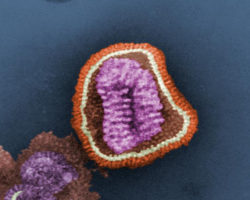Influenza can be deadly!
I get a flu shot every year. In a good year, the flu shot will decrease my risk of catching the flu by about 60%. In a bad year, it decreases my risk of catching the flu by only about 20%. But even that seems like a good deal to me. I’d gladly get a jab in the arm for even a 20% decrease in the risk of a week or more of misery. Also, I like the idea that my flu shot might make me less likely to make other people sick. The flu shot is also remarkably safe. Serious side effects are extremely rare. Meanwhile, influenza remains an important cause of hospitalization and death.
The flu is not just a bad cold, it is an infection with influenza virus. Every year, hundreds of thousands of people around the world die as the result of the seasonal influenza virus infections. Since the influenza virus mutates so rapidly, the vaccine has to be updated every year.
The influenza vaccines are far less effective than the other recommended vaccines. But it is against the vaccine-preventable disease that you are most likely to encounter. As a result, it is the vaccine that is most likely to make a real difference for you personally. Even if the flu vaccine provides only a partial match to the strain of flu virus that you encounter, it can give you partial protection. Also, because of a process called affinity maturation, even a partial match gives your body a head start at producing antibodies that will be effective. So even if you catch the influenza, your illness might be shorter and milder.
It’s hard to tell whether your flu shot worked. That’s because there are many flu-like illnesses besides influenza going around. Also, the effectiveness of the vaccine varies from year to year. Yet when you look at the research, you can see that having a flu shot does reduce the risk of hospitalization and death among the most vulnerable people .
The flu vaccine has to be updated every year. That’s because the influenza virus mutates so rapidly. For that reason, the World Health Organization runs an international program to monitor developments in the influenza viruses, to help develop vaccines against dangerous emerging strains.
In 1918–1919, a particularly deadly strain of flu spread around the world. This Great Pandemic killed more people than died in World War I. It killed more people in 25 months than HIV killed in 25 years. That is why epidemiologists and virologists are particularly afraid of dangerous new flu strains. The most dangerous strains are the ones that have recently jumped from pigs or birds to human beings.
Photo by kat m research 


